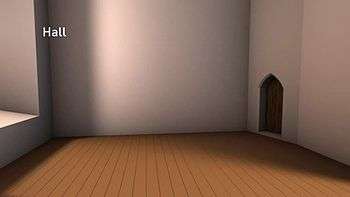Medieval archaeology
Medieval archaeology is the study of humankind through its material culture, specialising in the period of the European Middle Ages. At its broadest, the period stretches from the 5th to the 16th century and refers to post-Roman but pre-modern remains. The period covers the upheaval caused by the fall of the Roman Empire and cultures such as the Vikings, Saxons, and Franks. Archaeologists often specialise in studying either the Early Middle Ages (Migration Period) or the High Middle Ages and Late Middle Ages, although many projects and professionals move across these chronological boundaries. The rich nature of the medieval written record has meant that archaeology has often been seen as the "handmaiden to history",[1] especially in the later medieval period. Analysis of material culture may enrich or call into question written evidence from the medieval period and the two sources of evidence need to be used together. Medieval archaeology has examined the development of medieval settlements, particularly the development of medieval towns and castles. It has also contributed to understanding of the spread and development of Christian monasticism during the medieval period.
History of the study of medieval archaeology
The Society for Medieval Archaeology (United Kingdom) was founded in 1957. To celebrate its 50th anniversary, several publications examined the history of the society and the sub-discipline.[2][3] Christopher Gerrard's 2003 book Medieval Archaeology also charts the move in the United Kingdom from antiquarianism, through Victorian medievalism, on to the emergence of medieval archaeology as a sub-discipline in the 20th century.[4]
Areas of expertise
The study of medieval archaeology often focuses on specific kinds of settlement pattern.
Medieval towns
(which medieval towns?)
Medieval castles

Castles are medieval fortified structures.
Medieval monasteries
In the United Kingdom, the Dissolution of the Monasteries left many monastic sites abandoned. Where monasteries have survived or been converted for other uses, "buildings archaeology" has also been applied to study their history. Medieval monasteries often held large estates and the study of monastic landscapes is an area of specialised research.[5]
See also
References
- ↑ Gilchrist, R. 1994. 'Chapter 1. The Handmaid's Tale'. In Gilchrist, R. Gender and Material Culture. London: Routledge, pp. 1-21.
- ↑ Gilchrist, R. and Reynolds, A., eds. (2009) Reflections: 50 Years of Medieval Archaeology, 1957-2007. Society for Medieval Archaeology Monographs, 30. Maney, Leeds
- ↑ Gerrard, C. (2007). "Retrospect and Prospect: 50 years of Medieval Archaeology", webpage: MA-uk.
- ↑ Gerrard, C.M. (2003). Medieval Archaeology. Understanding traditions and contemporary approaches. London: Routledge.
- ↑ Aston, M. (2000) Monasteries in the Landscape. Revised Edition. The History Press
External links
- Journal "Medieval Archaeology“, digitized version of vols. 1–50 (1957–2006)